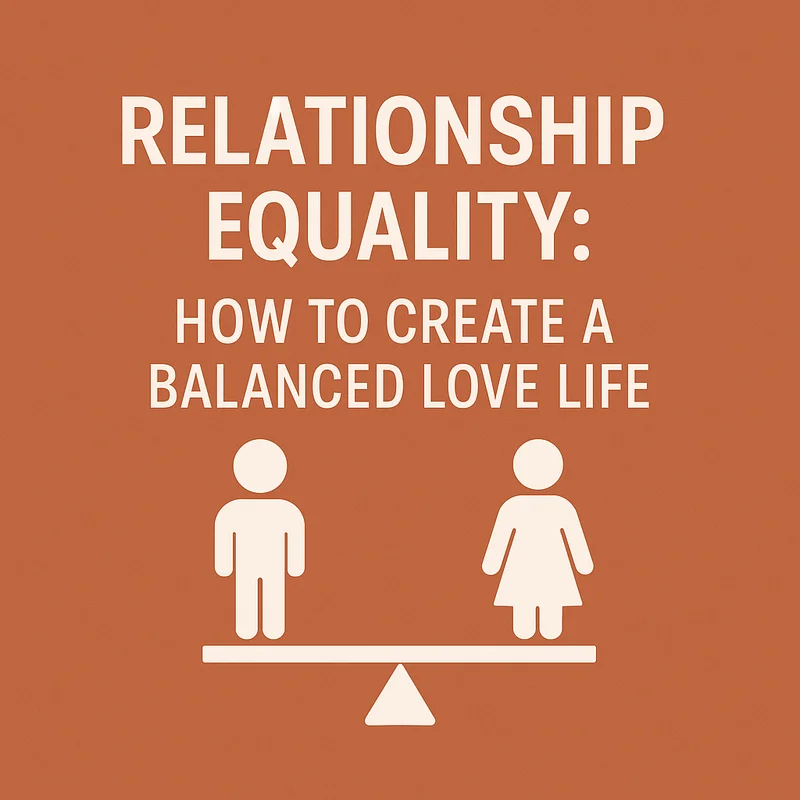
In a world where modern love is constantly evolving, relationship equality is no longer just a buzzword—it’s the foundation of a healthy, long-lasting connection. Whether you’ve just met someone on Mate4all or you’re in a committed relationship, understanding how to build equality in love can make the difference between a happy partnership and an emotionally draining one.
So what exactly does relationship equality mean, and how can you make it a part of your daily love life? Let’s dive in.
What Is Relationship Equality, Really?
At its core, relationship equality means both partners share mutual respect, power, and responsibility in the relationship. It’s not about splitting everything 50/50, but about ensuring both people feel valued, heard, and supported.
Equality vs. Equity
- Equality means giving both partners the same opportunities and voice.
- Equity goes a step further—acknowledging that different people may need different support to thrive.
In a truly equal relationship, both people grow together, contribute in meaningful ways, and feel empowered to be their authentic selves. No one dominates, and no one constantly sacrifices for the other.
5 Warning Signs Your Relationship Isn’t Equal
Even great relationships can fall into patterns of imbalance. Here are some red flags to watch for:
- You always make the plans – from dates to vacations, one partner takes full control.
- Emotional labor is one-sided – managing feelings, household chores, or social calendars falls to one person.
- You feel like a caretaker, not a partner – constantly giving without receiving the same energy back.
- Decision-making is lopsided – one partner calls the shots on finances, lifestyle, or even sex.
- Your needs are consistently ignored – you’re the one who adjusts, compromises, or gives in.
If any of these sound familiar, don’t panic—imbalances can be fixed with the right tools and effort.
How to Communicate for More Equality in Your Relationship
Communication is the secret sauce of any successful partnership. But when talking about fairness, it’s easy for things to get heated. Here’s how to navigate it with care:
- Use “I” statements to express your needs without sounding accusatory.
Example: “I feel overwhelmed doing all the housework.” - Actively listen instead of waiting for your turn to talk.
- Set clear expectations—talk about what equality means to both of you.
- Choose the right moment—avoid serious talks during high-stress times.
A great tip? Schedule regular “relationship check-ins” where you both talk openly about what’s working and what isn’t.
Top 7 Habits to Build a Balanced Relationship
Creating equality doesn’t mean keeping score—it’s about shared effort and empathy. Here are simple but powerful habits you can start today:
- Share tasks based on strengths, not outdated gender roles.
- Rotate emotional responsibilities like planning dates or managing social events.
- Be financially transparent—budget together, and avoid control dynamics.
- Support each other’s goals, whether it’s a new career, hobby, or lifestyle change.
- Respect boundaries—alone time is healthy, not a threat.
- Celebrate each other’s wins—big or small.
- Express appreciation daily—a thank-you can go a long way.
Remember: equality is about balance, not perfection.
Overcoming Real-Life Challenges to Relationship Equality
Let’s be real—building an equal relationship can be tough, especially if you’re dealing with:
- Cultural or traditional beliefs that favor one partner’s role
- Parenting duties that shift the balance
- Financial dependence or power imbalances
- One-sided efforts when only one person wants change
What helps? Compassionate honesty, willingness to grow, and sometimes, outside help.
When to Get Help: Therapy and Coaching Can Make a Difference
If conversations keep hitting a wall, a neutral third party like a relationship coach or couples therapist can help.
- Therapists can uncover deeper patterns and teach healthy communication.
- Coaches focus on goals, action steps, and accountability.
Services like BetterHelp, Talkspace, or local professionals can offer virtual or in-person support tailored to your needs.
Final Thoughts: Relationship Equality Is Worth the Work
In the end, equality isn’t about splitting the bill or taking turns doing laundry—it’s about mutual respect, effort, and understanding. When both partners feel seen and supported, love becomes a partnership, not a power struggle.
So whether you’re building something new from a Mate4all match or redefining your current relationship, remember: a balanced love life is not only possible—it’s what you deserve.
FAQs About Relationship Equality
Q1: What’s the difference between equality and equity in relationships?
Equality is giving both partners the same rights; equity is giving each what they need to thrive, even if that looks different.
Q2: Can a relationship survive without equality?
Long-term happiness often depends on equality. Relationships without it tend to breed resentment or burnout.
Q3: How do I bring up the topic without offending my partner?
Use “I” statements, focus on your feelings and goals, and approach the conversation with empathy and respect.
Q4: What are examples of relationship equality in action?
Examples include sharing financial decisions, rotating responsibilities like cooking or cleaning, supporting each other’s goals, and making compromises together rather than one partner always giving in.
Q5: How do I know if my partner values equality?
A partner who values equality will listen to your needs, respect your boundaries, share responsibilities, and be open to feedback without becoming defensive.
Q6: Is equality possible if one partner earns more money?
Yes. Financial equality isn’t about equal income, but about shared decisions, transparency, and avoiding control or resentment around money.
Q7: Can relationship equality exist in traditional gender roles?
It can—if both partners agree on the roles, feel fulfilled by them, and maintain mutual respect and open communication. Problems arise when roles are imposed or one partner feels undervalued.
Q8: How can new couples establish equality from the start?
Talk openly about your expectations, divide responsibilities early on, and keep the conversation going. Early patterns often set the tone for the future.
Q9: What if only one partner is willing to work on relationship equality?
One person can start the conversation, but long-term change requires both partners. If only one is willing to grow, counseling or coaching might be needed—or a decision about the future of the relationship.
Q10: How often should couples check in on their relationship dynamics?
Monthly or bi-weekly relationship check-ins can help identify imbalances early and keep both partners aligned on goals, needs, and satisfaction.
Q11: Is relationship equality the same in LGBTQ+ relationships?
Yes, though dynamics may differ, the core principles—mutual respect, shared power, and fairness—apply to all relationships, regardless of gender or orientation.



